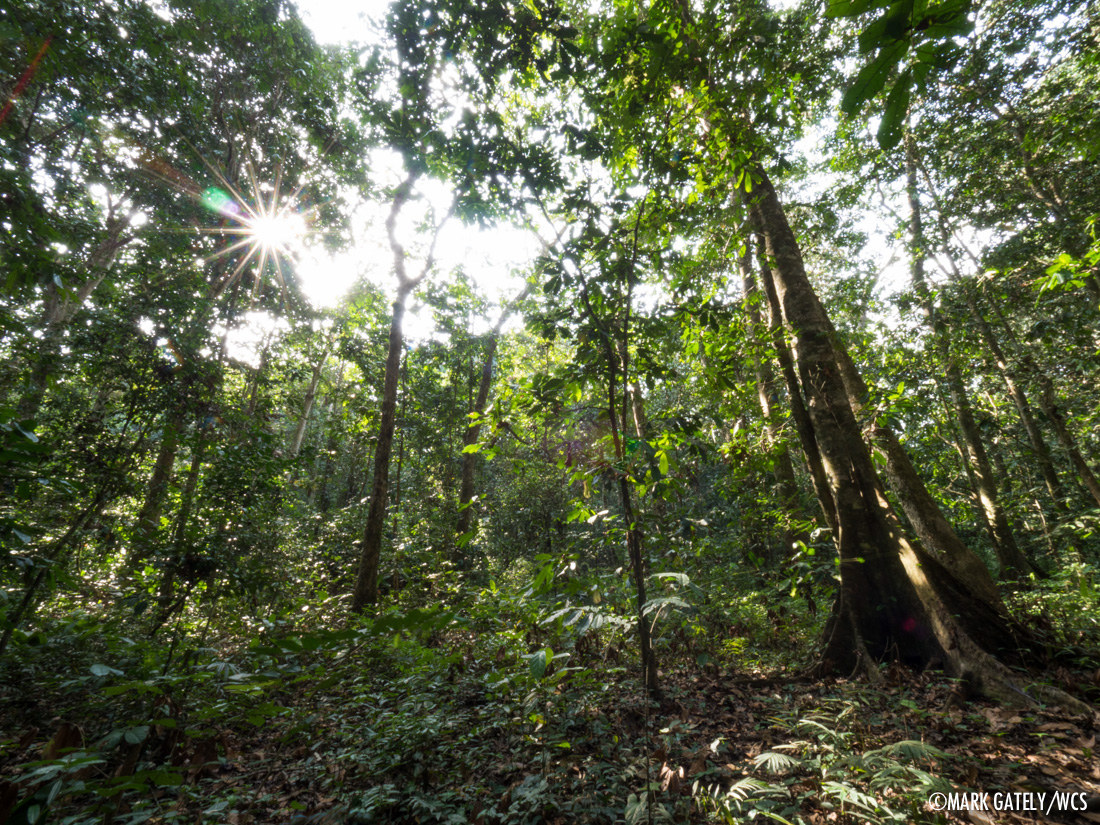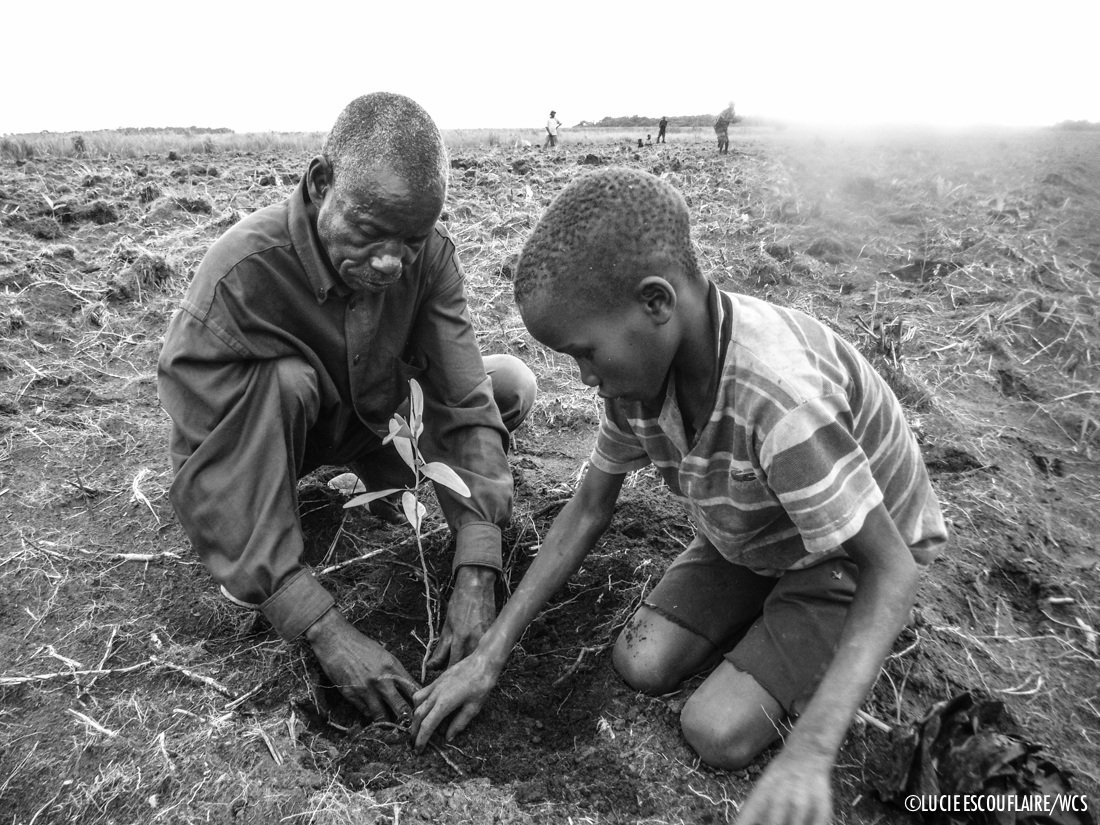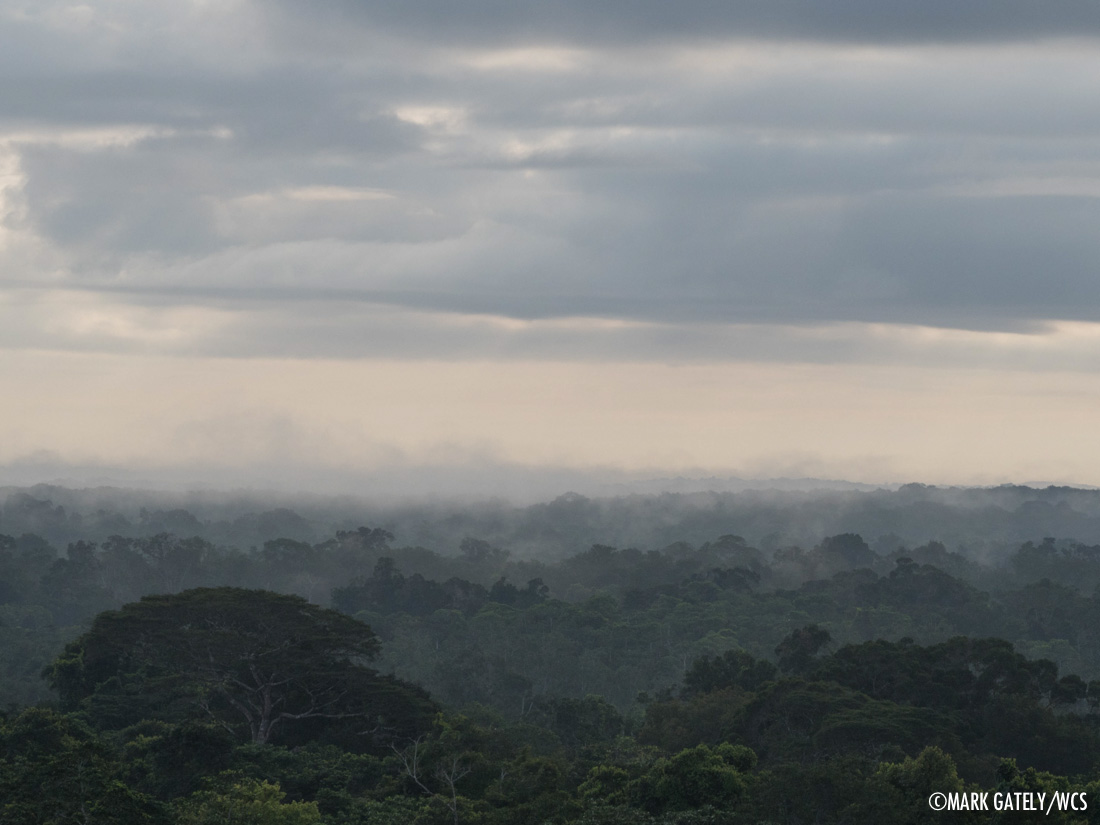
Trees for Congo
Across the north of Congo spans one of Africa’s most pristine belts of rainforest. This vast expanse of trees not only harbors astonishing biodiversity, but is also a vital buffer against the effects of climate change. Further south, pockets of forest on the sandy hills of the savannah result in interesting and unique faunal assemblages. This year the theme for Earth Day is Trees for the Earth, here at WCS Congo we have a lot to do with trees every day of the year.
Today 155 countries are planning on signing a U. N. agreement on climate change. Tropical forests absorb about 2 billion tons of carbon each year, but logging and deforestation to clear land for agriculture in the tropics releases an equivalent amount of carbon into the atmosphere annually. The rainforests of northern Congo store and absorb carbon, buffer temperature increases and moderate weather patterns. Conserving the rainforests of central Africa in their intact form is therefore an important step towards buffering climate change.

WCS Congo works with the Congolese government to manage and conserve several thousand square kilometers of rainforest in the Republic of Congo. We support protection of these massive stretches of forest and their wildlife, but also seek to find sustainable alternatives for people reliant on forest resources. For example, the WCS Bateke Plateau project is working with The Aspinall Foundation to implement agroforestry scheme with the aim of reducing deforestation, while at the same time improving the livelihoods of local communities.
”Tropical forests absorb about 2 billion tons of carbon each year, but logging and deforestation to clear land for agriculture in the tropics releases an equivalent amount of carbon into the atmosphere annually.
As the human population in the plateau increases, more and more pressure is being placed on two faunal reserves in the area: Lesio-Louna and Lefini. With support from USAID and the Norwegian Ministry of Climate and Environment, WCS helps communities to create agroforestry plantations that provide both short and long-term benefits to local communities. Crops that are grown within these plantations in the first years of the project provide food security and income for communities. Once the canopy of the plantations grows closed, shade tolerant species used by villagers are grown under the trees. Finally when the trees are ready for harvest they can be used for fuel wood or sold as construction timber. Traditionally fuel wood is harvested in the forest; a labor-intensive activity that is detrimental to the environment. Growing fuel wood in plantations reduces the workload of the women in the community who no longer have to travel great distances to collect firewood and also reduces pressure on the natural forest.

Projects like this one are bridging an important gap in conservation by finding solutions that benefit communities and also meet conservation objectives. Finding solutions like these are essential if we are to effectively combat habitat destruction, the greatest threat to the green lungs of our planet today.

